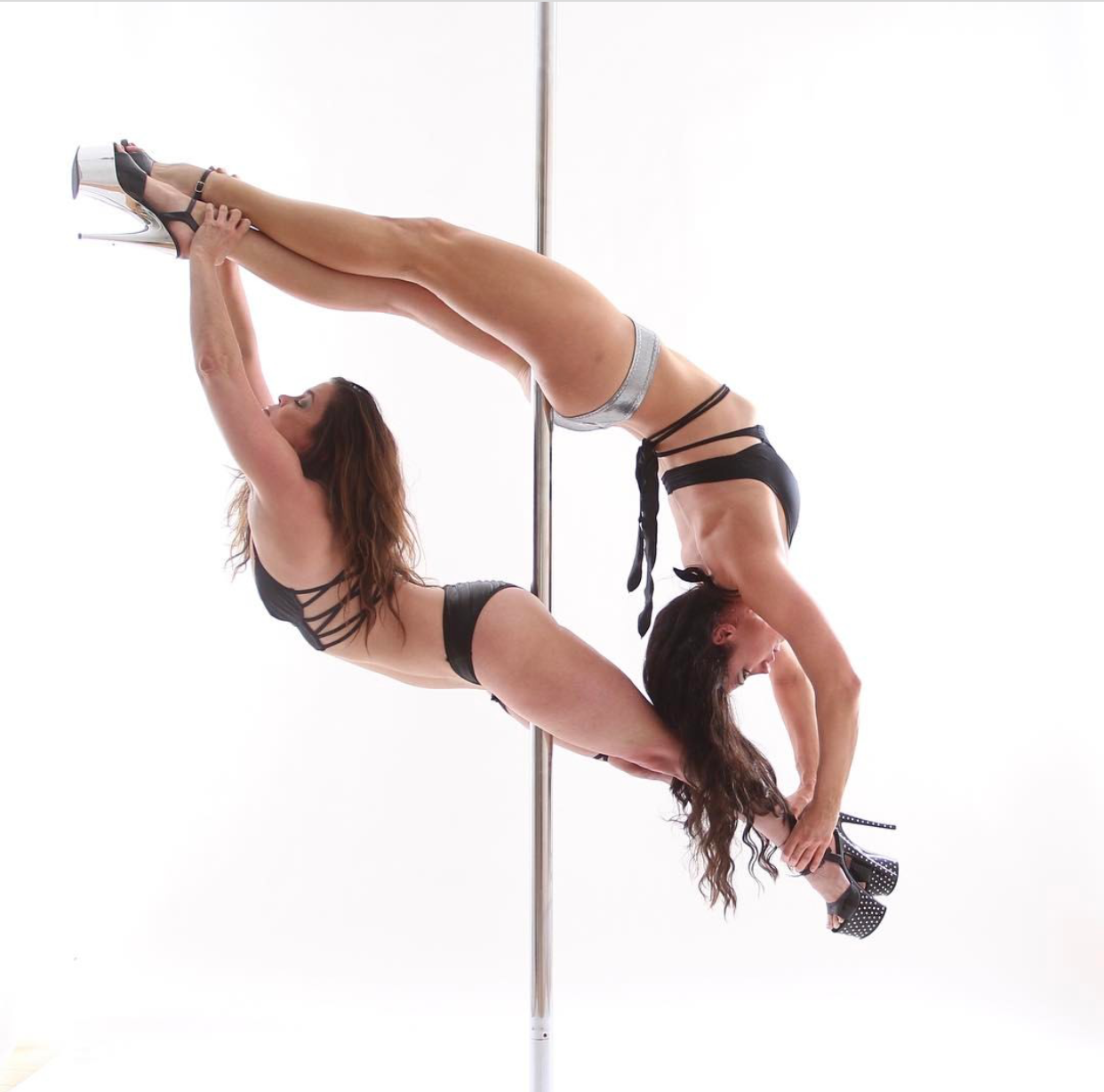Stripper Bodies: Strength vs. Flexibility
By Dre Dee
Image: Don Q Photography
The answer of course is that they are both important! You can be flexible without being strong and you can be strong without being flexible, however, both of these scenarios will set you up to get injured. It is important to find a balance of being flexible AND strong, especially in pole dance, which is one of the reasons I find it so challenging sometimes.
Honestly I feel a little weird writing this blog because as you can see in my pictures – I am not very flexible (yet)! It’s something I have always struggled with – even when I did dance when I was young I was never able to do the splits. As soon as I turned 18 I started doing strength training and cardio in gyms and have always been very strong. The stretching I did was pretty minimal – obesity runs in both sides of my family so my priority was always to get my weight training and cardio in to maintain a healthy weight. When I started doing yoga and then pole, I started realizing just how limited my flexibility is. Unfortunately I have a full time job so it’s still hard to find time to add flexibility training in when I am already spending so much time doing interval training, yoga, and pole, but I am working on developing some flexibility programs and workouts (check out my Yoga Shoulder Stretching Sequence) and scheduling them into my weekly workout routine more.
A lot of my knowledge about flexibility and strength training actually comes from my training as a therapist and years of working with many different types of patients. One of the areas I specialize in is strokes and brain injuries. When a person has a stroke or brain injury, muscle tone is often affected – the person may have decreased muscle tone, which makes the arm and/or leg limp and flaccid, or he or she may have increased tone, making it difficult or impossible for the muscles to relax. One of my many goals with this type of patient is to strengthen the arm if the muscle tone is weak or stretch the joint to increase range of motion if there is increased muscle tone. In Cleo the Hurricane‘s Rockin’ Legs N Abs (which is a GREAT hip flexibility program – I mean have you seen that woman’s splits??), she talks about PNF stretches. I was so excited when I heard her use this term because that’s a technique I’ve been using with my neurological patients for years. For some reason it never occurred to me to use it on myself.
There are many additional techniques to use as well. The more I learn and the different exercises I see, the more I realize that flexibility is just as much about strength as it is about stretching. One key technique is to strengthen the opposing muscles to whatever area you are tight in. For example, if your inner thighs are super tight in center splits, you want to strengthen the outer hip muscles as much as possible. Fast, active range of motion or resistance exercises are most effective (for example, to increase range of motion in front splits , when all fours put an ankle weight on one ankle and squeeze that heel towards ceiling to strengthen your glutes. This will help to increase flexibility in the hip flexor).
Here are some key points to remember when working flexibility.
1) Do not compare yourself to others. Flexibility depends on sooo many factors – your age, your natural flexibility level, muscle tone, what types of exercises you have done in your lifetime, and many other things. That being said, almost anyone can dramatically increase his or her flexibility level with proper training. The down side – usually the more strong and tight your joints are, the longer it will take and the more work you will need to do.
2) Stay consistent. Your muscle memory retains information from previous sessions and when you have too long in between sessions of working on that particular area, you can lose the hard earned progress that you have made. You should stretch whatever area you are working at least once or twice a week to see progress.
3) Warm up! It’s very important to be thoroughly warmed up in your joints before you try to stretch – especially if you tend to be pretty tight. Properly warming up maximizes the benefits of stretches and prevents injuries. You can check out my videos for warmup and stretching sequences for various body parts.
4) Flexibility takes time. Be patient with yourself. Don’t force it. Trying to force flexibility is a quick way to get injured which can set you back months or years in your progress. Not worth it!
5) Breathe. Using your breath is the best way to achieve maximum benefits from static stretches. Try to relax your muscles during the exhales. Take a deep breath and hang in there – it’s worth it in the end!
